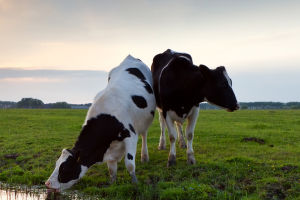Rhinoceros (scientific name: Rhinocerotidae) is the general name for mammals of the rhinoceros family.
There are four genera and five species of Rhinocerotids, which are the largest odd-hoofed animals in the world. They have short legs and fat, clumsy bodies, with body lengths ranging from 2.2-4.5 m, shoulder heights from 1.2-2 m, and weights from 2800-3000 kg. Their front and hind limbs are three-toed, and their skin is thick and rough, arranged in folds at the shoulder and waist. The hair is sparse and hard, the ears are oval, the head is large and long, and the neck is short and thick. The long lip is extended, and the head has either a solid single horn or double horns (some females have no horns). Originating from the dermis, the horns can still be reborn when they fall off, and they have no canine teeth. The tail is thin and short, and the body is yellowish-brown, brown, black, or grey.
It inhabits lowlands or highlands at more than 2000 meters above sea level. Active at night, living alone or in small groups. The living area is never out of water. Diet varies by species, with grasses dominating. It feeds on leaves, shoots, wild fruits, lichens, etc.
The gestation period of females is 18-19 months. Life expectancy is 30-50 years. Captured in large numbers because of the decorative and medicinal value of rhinoceros horn. All endangered species except white rhinoceros. Distributed in southern Asia, Southeast Asia, and sub-Saharan Africa.
Rhinos are among the strongest animals in the world. Their shells can resist gunfire and sword attacks. The rhino's shell is made up of keratin protein. This protein makes their shells very hard.
There are four species of rhinoceros, the African rhinoceros, the Indian rhinoceros, the Sumatran rhinoceros and the small rhinoceros.
The evolutionary history of the rhinoceros goes back millions of years. At that time, the rhinoceros was a huge prehistoric animal, more than twice the size of today's rhinoceros. As time passed, the rhinoceros gradually evolved into what it is today. Rhinos have a different lifestyle than other animals, living in desert and grassland areas and having adapted to this harsh living environment. They can survive with little to no water, as they can get water from their food, and are also able to survive in hot environments due to their high capacity for thermoregulation.
The rhinoceros is one of the endangered species and therefore needs our protection. The rhino population has declined significantly in the past few decades due to human activities such as hunting and habitat deforestation, which pose a huge threat to rhinos. To save this endangered species, people need to take several actions, including protecting the rhino's habitat, banning rhino hunting and killing, and breeding rhinos through the efforts of animal protection organizations.
The rhinoceros plays an important role in art and culture. In ancient Egyptian civilization, it was considered a sacred animal, symbolizing strength and dignity. In Chinese culture, the rhinoceros was seen as an auspicious object, symbolizing longevity and good luck. Overall, rhinoceroses are amazing and interesting animals. They have a unique significance in evolutionary history, habits, conservation and rescue, art and culture, and medicine. We should strive to protect this endangered species and increase our understanding of them.


